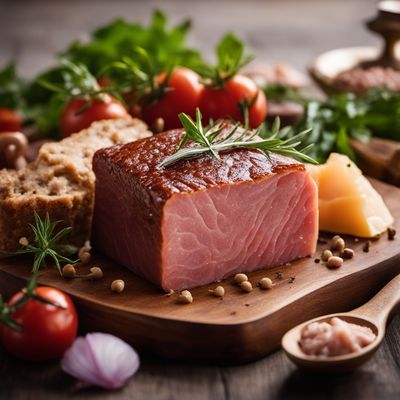
Ingredient
Meat burger (no sandwich)
The Savory Delight: Unleashing the Flavors of a Meat Burger
A meat burger is typically made from ground meat, such as beef, pork, chicken, or turkey, mixed with various seasonings and binders. The mixture is shaped into patties and cooked to perfection, resulting in a juicy and flavorful delight. The texture of a meat burger can range from tender to slightly firm, depending on the cooking method and desired doneness. Its appearance showcases a browned and charred exterior, while the interior remains moist and succulent.
Origins and history
The concept of a meat burger can be traced back to ancient times when people began grinding meat to make it more palatable and easier to consume. However, the modern meat burger as we know it today gained popularity in the late 19th and early 20th centuries, particularly in the United States. It quickly became an iconic American dish and eventually spread worldwide, adapting to various regional flavors and preferences. Today, meat burgers are an integral part of fast food culture and are enjoyed in countless variations across the globe.
Nutritional information
A meat burger provides a good source of protein, essential amino acids, vitamins, and minerals. The nutritional content can vary depending on the type of meat used and the cooking method. It is important to consider the fat content and portion size when incorporating meat burgers into a balanced diet.
Allergens
Some meat burgers may contain allergens such as gluten, soy, or dairy, depending on the ingredients used in the patty or toppings. It is crucial to check the labels or inquire about potential allergens when consuming or preparing meat burgers, especially for individuals with specific dietary restrictions or allergies.
How to select
When selecting a meat burger, opt for freshly ground meat or pre-packaged patties that are well-marbled and have a vibrant red color. Look for meat with a good balance of fat and lean meat for optimal flavor and juiciness. Additionally, consider the source of the meat, opting for organic, grass-fed, or ethically raised options when available.
Storage recommendations
To maintain the freshness and quality of meat burgers, store them in the refrigerator at a temperature below 40°F (4°C). If storing for an extended period, consider freezing the patties individually wrapped in plastic or wax paper. Cooked meat burgers should be consumed within 3-4 days when refrigerated.
How to produce
Producing a meat burger requires grinding the desired meat, mixing it with seasonings and binders such as breadcrumbs or eggs, shaping the mixture into patties, and cooking them to the desired level of doneness. Amateur cooks can easily make meat burgers at home using a stovetop skillet, grill, or oven.
Preparation tips
When preparing meat burgers, ensure the meat is properly seasoned with salt, pepper, and any desired herbs or spices. Shape the patties gently, avoiding over-packing or excessive handling, to maintain a tender texture. Cook the burgers to the desired level of doneness, ensuring they reach a safe internal temperature of 160°F (71°C) for ground beef. Experiment with various toppings, cheeses, and condiments to customize the flavor profile of your meat burger.
Culinary uses
Meat burgers are incredibly versatile and can be enjoyed in various culinary creations. They are commonly served on buns or bread rolls with a range of toppings such as lettuce, tomatoes, onions, pickles, cheese, bacon, and sauces like ketchup, mustard, or mayonnaise. Meat burgers are also used as a base for gourmet creations, such as sliders, stuffed burgers, or as a protein component in dishes like meatloaf or meatball subs.
Availability
Meat burgers are widely available in supermarkets, butcher shops, and fast food establishments worldwide. They are a staple in American cuisine and have gained popularity in many other countries, making them easily accessible for consumers.
More ingredients from this category

Meat terrine
The Savory Delight

Meat stew
Hearty Delight: Exploring the World of Meat Stew

Meat in aspic
Gelatinous Delight

Meat balls
Savory Spheres of Meaty Delight

Goulash
"Savor the Richness: Exploring the Hearty Delights of Goulash"

Meat loaf
Savory Meat Delight

Moussaka
The Mediterranean Delight

Offal based dishes
"The Hidden Delicacies: Exploring the World of Offal-Based Dishes"